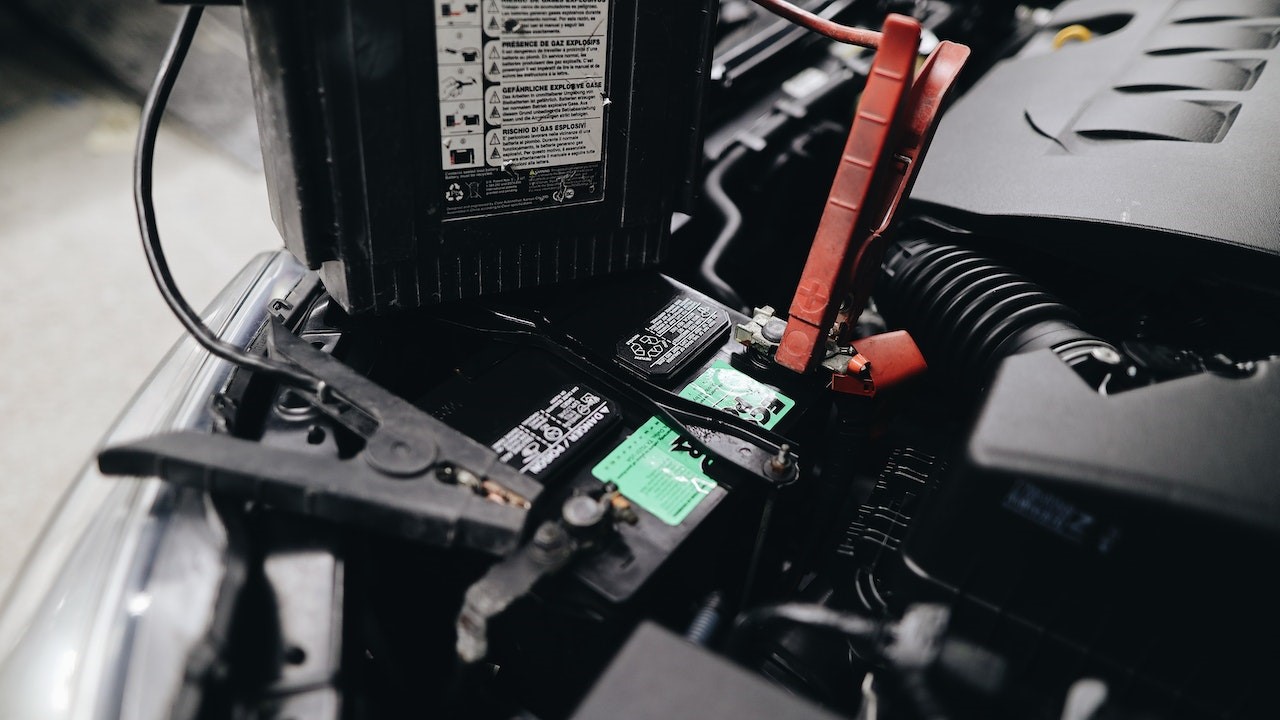How to Remove Car Battery Corrosion
 Photo by Julia Avamotive under Pexels License
Photo by Julia Avamotive under Pexels License
You Can Do It Yourself!
There’s nothing more frustrating than a car that won’t start when you’re already late for work. If nothing happens even after you’ve made sure that you have gas and checked if the steering wheel isn’t locked, then you may be dealing with a problem in your car battery, including the possibility of battery corrosion. Aside from keeping your vehicle from starting, did you know that battery corrosion can also do considerable damage to your car’s electrical wiring and air conditioning system?
What Is the Main Cause of Battery Corrosion?
The primary cause of car battery corrosion is time. The older your battery gets, the more time it has spent heating and cooling as the motor runs. During the process, hydrogen gases are constantly released through its ventilation until they mix with the battery’s material. Over time, corrosion is formed at the battery’s connection points, which are the terminals.
When Should You Check for Corrosion?
You’ll know that it’s time to check for signs of corrosion when you see low voltage codes on your dashboard lights and experience problems starting your car or diminished auto power.
Before calling for help, you may want to pop the hood and keep an eye out for the corroded parts of your battery. Don’t worry, battery corrosion is extremely easy to spot. Just check for a green, white, or blue-tinged powdery material caked around your car’s battery terminals, battery cables, or battery posts. Once you’ve identified the problem, the next step is to clean it up.
You’ll be glad to know that the process of removing car battery corrosion is simple and you won’t need to take your car to the mechanic to get the job done. You can do it yourself!
Get Rid of Car Battery Corrosion in 6 Easy Steps
If you want to extend your battery life and performance, you have to keep your car’s battery clear of any signs of corrosion. Goodwill Car Donations is here to guide you through the process. Check out these easy steps to get rid of car battery corrosion:
- STEP 1: Disconnect your battery cables.
You wouldn’t want to be electrocuted and suffer severe burns. That’s why you need to be sure to identify the negative battery cable and disconnect it before you disconnect the positive battery cable. The negative cable is black and is marked by the abbreviation “NEG” and the negative sign (-). On the other hand, the positive cable is red and is marked by the abbreviation “POS” and the positive sign (+).
- STEP 2: Check the cables for signs of damage.
One of the most common reasons behind non-starting engines is damaged or worn-out battery cables. Do you see signs of corrosion on your cables’ insulation? Are the cables splintered, frayed, peeled, cracked, or dried? If your cables are damaged, you need to have them replaced immediately.
- STEP 3: Use a cleaning agent to remove and neutralize the battery corrosion.
You’ll need to apply a battery cleaning agent to get rid of the corrosion from the car battery and the cables while neutralizing the battery acid. If you don’t have commercial-grade battery cleaners, you can use baking soda or Coca-Cola. However, take extra caution if you decide to use Coca-Cola because it contains phosphoric acid and synthetic sugars that can cause damage to your car’s engine.
The method is extremely easy to perform. Just mix a teaspoon of baking soda with a glass of water or else use a small amount of Coca-Cola and pour a small amount of the liquid on the areas that are corroded. The Coke will bubble and eat away at the rust and corrosion. The acid in Coke will neutralize the corrosion on the battery and cables.
When the Coke has finished bubbling, take a wire brush and brush away any corrosion that is stuck around bolts or any other hard-to-reach areas.
If you’re using baking soda, cover the battery terminals and other corroded areas with a coat of this chemical before pouring a tiny amount of water on them. Then, use an old toothbrush to scrub the solution on the surface.
When you have brushed away all of the loosened corrosion and rust, wipe the corroded areas with a paper towel to remove the Coke or baking soda residue and the corrosion. Pour a small amount of water over the area to rinse away the sticky residue and the last of the corrosion from the battery. Wipe down the area to dry it and soak up any remaining residue.
- STEP 4: Rinse and dry.
To make sure that the cleaning agent as well as the corrosive elements don’t fall on the other parts of the engine and your car’s paint job, it’s best to take the battery out as carefully as possible. After scrubbing off all signs of corrosion, use clean water to rinse the cable ends and battery and let everything dry.
- STEP 5: Apply anti-corrosion pads.
To protect your car battery from corrosion, be sure to apply anti-corrosion pads after everything dries. While you’re at it, be sure to apply a thin coat of petroleum jelly on the battery terminals to enhance the electricity conduciveness between the terminals and the cable ends.
- STEP 6: Reconnect the battery to the car in reverse order.
Reconnect your battery to the vehicle in reverse order to protect yourself from injury. First, connect the positive battery terminal before connecting the negative one.
Thinking How Best to Dispose of an Unwanted Vehicle?
If you’ve driven your car into the ground and you’re now thinking about getting rid of it, consider donating it to us at Goodwill Car Donations. We’ll give your unwanted auto a new and worthy purpose that will make you proud.
Our team will have your automobile fixed before putting it on the auction block. Once it gets sold, the proceeds will go to the Goodwill organizations serving your area.
These IRS-certified 501(c)(3) nonprofits cater to men and women who are burdened with disabilities, lack of education, essential skills, or job experience, and other limiting personal issues, such as being a former inmate or having a welfare mentality. These disadvantages prevent them from finding decent sources of income that can enable them to escape from the grip of poverty.
Your local Goodwill organizations use the funding we give them to provide their beneficiaries with job and skills training, vocational services, scholarships, financial aid, disability benefits, family support, and other essential support services.
Expect to receive the 100% tax-deductible sales receipt of your car by mail soon after your vehicle’s auction. You’ll need it to claim your top tax deduction in the next tax season.
Moreover, we’ll provide you with our free towing service at a date and place most convenient to you anywhere in the country.
Your gift will also allow you to savor the satisfaction of serving your community by helping empower your less fortunate neighbors.
We accept nearly all vehicle types — even those that are no longer working.
For more information about our vehicle donation program, including our quick and easy donation process, feel free to check out our FAQs page. If you have questions or concerns, call us anytime through our toll-free hotline at 866-233-8586 or message us here.
Become a Benefactor to the Needy Today!
 Photo by Lukas under Pexels License
Photo by Lukas under Pexels License
You can make a difference in your community with your donation of even an unwanted vehicle. Such a donation can make you a benefactor to the disadvantaged residents of your community. Call Goodwill Car Donations at 866-233-8586 or fill out our secure online donation form now!
Last Updated: May 26th, 2023